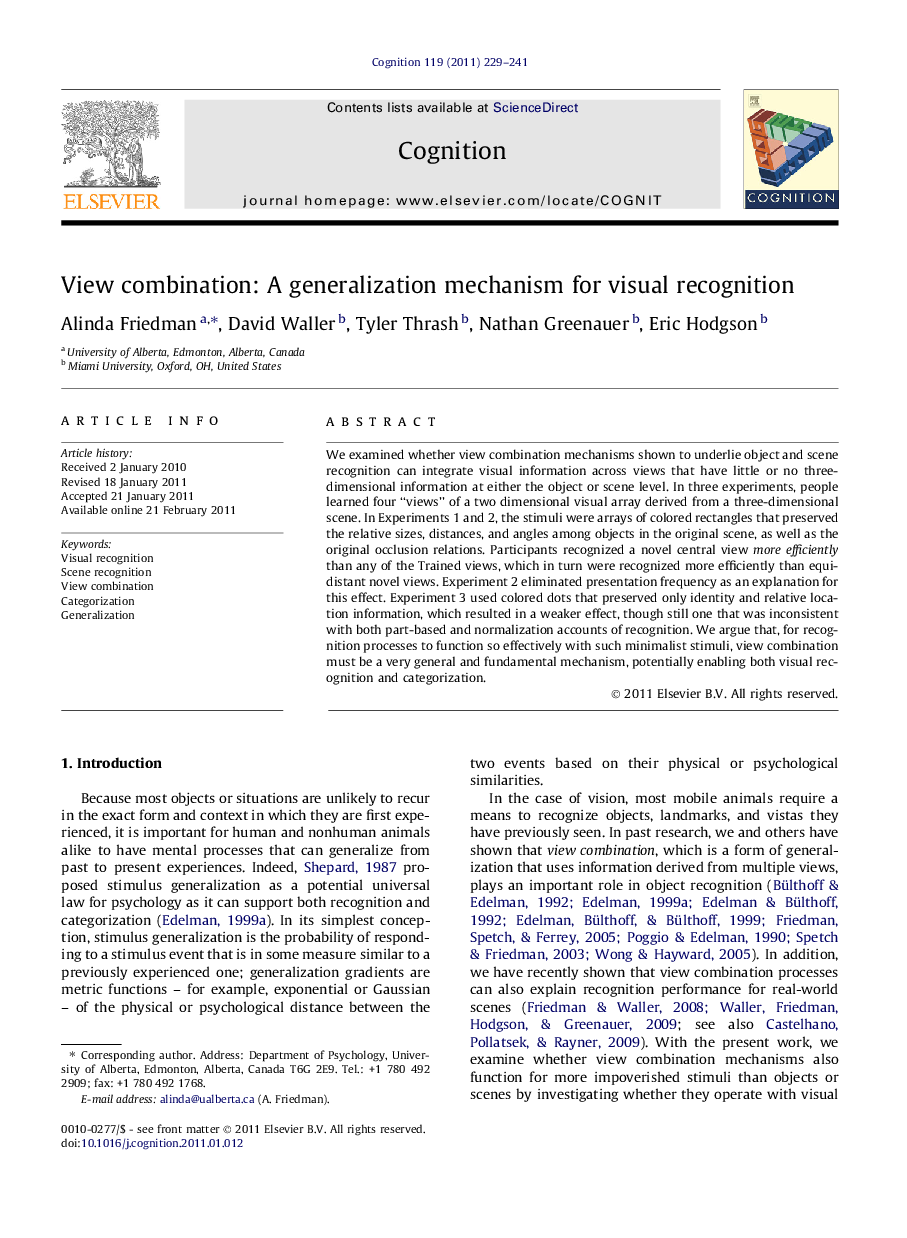| Article ID | Journal | Published Year | Pages | File Type |
|---|---|---|---|---|
| 926575 | Cognition | 2011 | 13 Pages |
We examined whether view combination mechanisms shown to underlie object and scene recognition can integrate visual information across views that have little or no three-dimensional information at either the object or scene level. In three experiments, people learned four “views” of a two dimensional visual array derived from a three-dimensional scene. In Experiments 1 and 2, the stimuli were arrays of colored rectangles that preserved the relative sizes, distances, and angles among objects in the original scene, as well as the original occlusion relations. Participants recognized a novel central view more efficiently than any of the Trained views, which in turn were recognized more efficiently than equidistant novel views. Experiment 2 eliminated presentation frequency as an explanation for this effect. Experiment 3 used colored dots that preserved only identity and relative location information, which resulted in a weaker effect, though still one that was inconsistent with both part-based and normalization accounts of recognition. We argue that, for recognition processes to function so effectively with such minimalist stimuli, view combination must be a very general and fundamental mechanism, potentially enabling both visual recognition and categorization.
